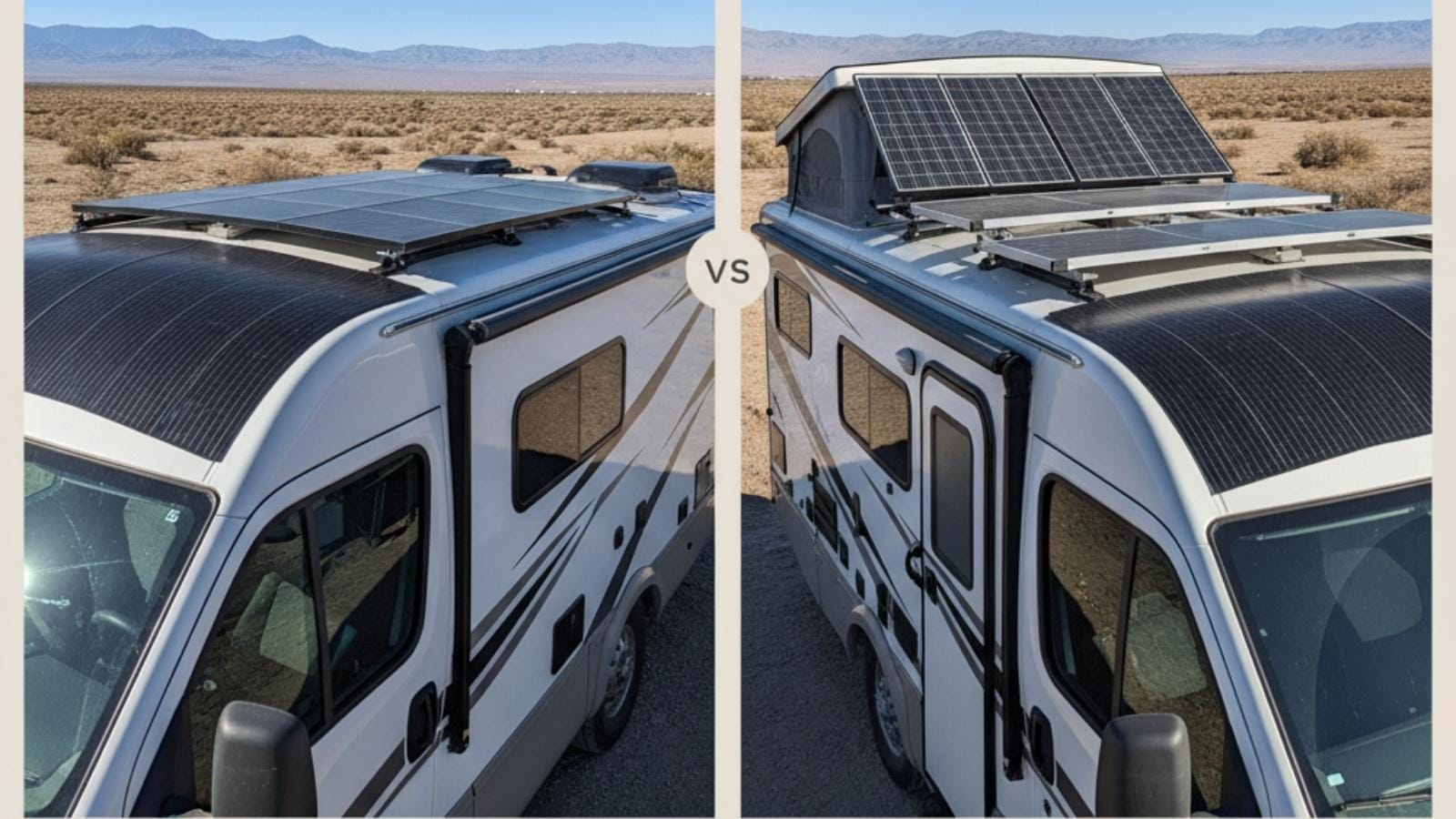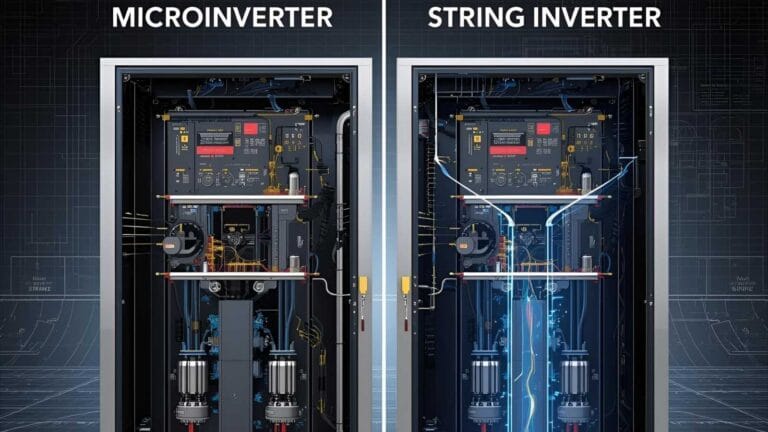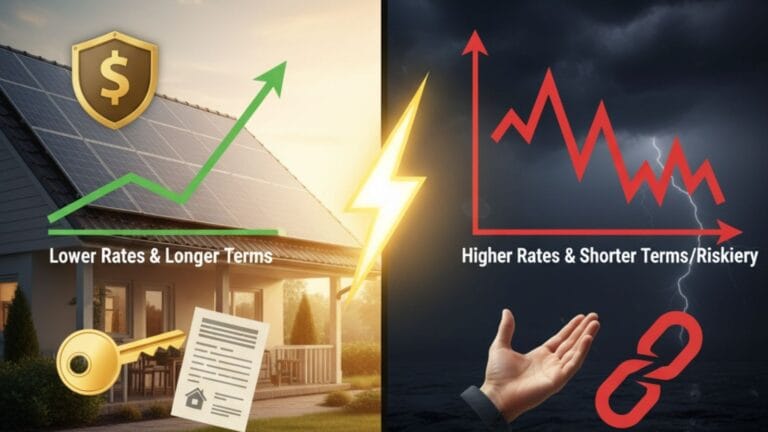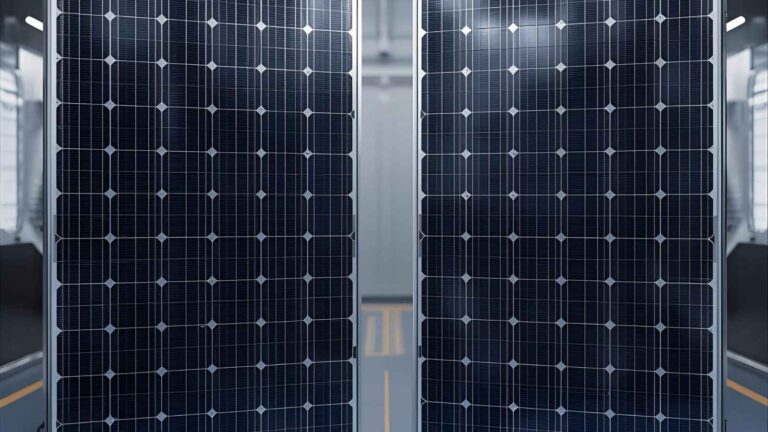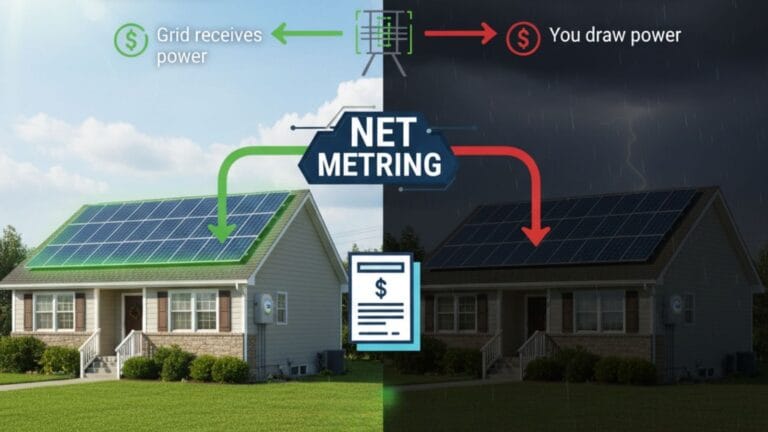Flexible vs. Rigid Solar Panels for RVs: A Complete Comparison
Embarking on the journey to power your RV with the sun is a game-changer. It’s the final piece of the puzzle for true off-grid freedom, allowing you to stay longer in the wild places you love. But before you can reap the rewards of silent, clean energy, you face one of the most fundamental decisions in designing your system: choosing between flexible vs. rigid solar panels.
This single choice impacts everything from your budget and installation process to your system’s long-term performance and durability. On one side, you have the time-tested, robust power of rigid panels. On the other, the lightweight, low-profile appeal of modern flexible panels. Both technologies have passionate advocates in the RV and van life communities, but which one is truly right for you?
This definitive guide will provide a complete comparison, breaking down the debate into a head-to-head analysis of the factors that matter most for mobile living. We’ll examine cost, efficiency, durability, lifespan, and ease of installation to give you the expert insights needed to make a confident and informed decision for your adventure rig.
What Are Rigid Solar Panels? The Traditional Powerhouse
When you picture a solar panel, you’re likely thinking of a rigid panel. These are the workhorses of the solar industry, trusted for decades on residential rooftops and in large-scale solar farms. A rigid solar panel for an RV consists of solar cells (typically monocrystalline or polycrystalline silicon) encapsulated between a sheet of tempered glass on top and a durable backsheet, all held together by a sturdy aluminum frame.
This construction makes them incredibly robust. They are designed to withstand harsh weather, from hailstorms to heavy snow loads, and the aluminum frame provides multiple secure points for mounting them to an RV roof. Think of them as the heavy-duty trucks of the solar world—built to last and perform reliably under pressure.
What Are Flexible Solar Panels? The Lightweight Innovator
Flexible solar panels represent a more recent innovation in solar technology. Instead of being encased in glass and aluminum, the ultra-thin silicon solar cells are bonded to a flexible plastic or polymer sheet. This results in a panel that is incredibly thin, often just a few millimeters thick, and lightweight enough to be picked up with one hand.
This design allows them to be mounted on surfaces that can’t support the weight of rigid panels, such as the pop-tops of campervans or the curved roofs of Airstreams and fiberglass trailers. They offer a sleek, low-profile aesthetic that is highly valued in the “stealth” van life community. They are the versatile, lightweight sports cars of the solar world—offering a different approach to mobile power generation.
Head-to-Head Comparison: Flexible vs. Rigid Solar Panels for RVs
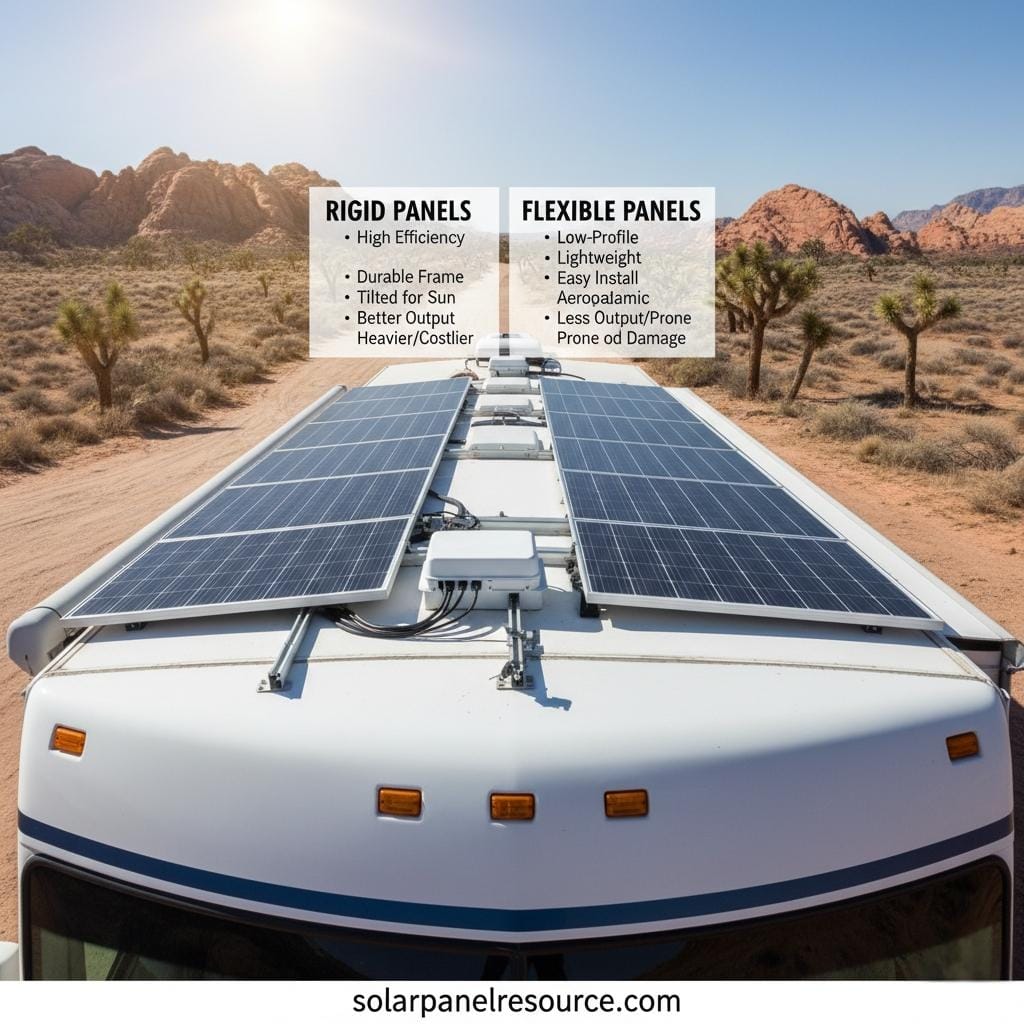
To make the best choice, we need to compare these two technologies across the five key criteria that are most important for life on the road. There is no one-size-fits-all answer; the winner for you will depend on your priorities.
Round 1: Durability and Lifespan
Your RV is a moving earthquake, constantly subjecting everything on its roof to vibration, twisting, and impacts from low-hanging branches. Durability is not just a feature; it’s a necessity.
Rigid Panels
The combination of a rigid aluminum frame and a thick layer of tempered glass makes these panels exceptionally tough. They are designed to deflect impacts and protect the fragile solar cells within. This robust construction is why manufacturers confidently offer 25-year performance warranties, guaranteeing the panel will still produce a high percentage of its rated power decades down the road. They also typically come with a 10-15 year product warranty against manufacturing defects.
Flexible Panels
This is the category where flexible panels face their biggest challenge. Lacking a protective frame and glass, the solar cells are far more vulnerable. The plastic top layer (often ETFE or PET) can protect against scratches but offers little defense against a sharp impact from a falling branch or road debris. More importantly, the constant expansion and contraction from heating and cooling cycles can cause micro-cracks in the cells or delamination of the layers over time. This is reflected in their much shorter warranties, typically ranging from 1 to 5 years.
Winner: Rigid Solar Panels. It’s not a close contest. For long-term durability and peace of mind, rigid panels are unequivocally superior.
Round 2: Efficiency and Performance
On the limited roof space of an RV or van, every square inch counts. Getting the most power possible from your available area is the primary goal.
Rigid Panels
Today’s market is dominated by high-efficiency monocrystalline rigid panels, with ratings often exceeding 22%. A key performance advantage comes from their mounting method. By installing them on brackets, you create a critical air gap between the panel and the RV roof. This airflow is essential for cooling. As a panel’s temperature increases, its efficiency decreases—a concept known as the temperature coefficient. The air gap helps mitigate this power loss, allowing the panel to perform closer to its rated output, especially in hot, sunny climates.
Flexible Panels
While the underlying cell technology can be just as efficient, the real-world performance of flexible panels is often hampered by heat. When glued or taped directly to a roof, there is no air gap for cooling. On a hot day, the surface of an RV roof can reach scorching temperatures, causing the flexible panel’s output to drop significantly more than a comparable rigid panel. According to research from the National Renewable Energy Laboratory (NREL), high operating temperatures are a known factor that can degrade PV module performance and lifespan.
Winner: Rigid Solar Panels. Due to their superior heat dissipation, rigid panels deliver more consistent and reliable real-world power output, making them more efficient in practice.
Round 3: Cost and Value
Budget is a major consideration for any RV upgrade. Here, we need to look at both the initial upfront cost and the long-term value of the investment.
Rigid Panels
Thanks to mature manufacturing processes and economies of scale, rigid solar panels offer an excellent value proposition. On a dollar-per-watt basis, they are generally the most affordable option. For example, a quality 100-watt rigid monocrystalline panel might cost between $80 and $120.
Flexible Panels
The specialized manufacturing process makes flexible panels more expensive upfront. A comparable 100-watt flexible panel often costs between $150 and $250. When you factor in their much shorter lifespan, the long-term cost is significantly higher, as you may need to replace them three or even five times during the 25-year lifespan of a single rigid panel.
Winner: Rigid Solar Panels. They are cheaper to buy initially and provide far greater long-term value due to their extended lifespan, making them the clear winner on cost.
Round 4: Installation and Mounting
This is where the unique advantages of flexible panels truly shine and can sometimes outweigh their disadvantages.
Rigid Panels
Installation requires drilling multiple holes in your RV roof to secure the mounting brackets. While this is a straightforward process, it can be intimidating for many DIYers. Each penetration point must be meticulously sealed with a quality lap sealant to prevent water leaks. The process is labor-intensive and requires careful planning and execution.
Flexible Panels
Installation can be much simpler. Many flexible panels can be mounted using specialized VHB (Very High Bond) tape or a strong construction adhesive like Sikaflex. This can create a secure, drill-free installation that is faster and less daunting for beginners. Their ability to conform to curved surfaces also makes them the only viable option for vehicles like Airstreams or campers with non-flat roofs.
Winner: Flexible Solar Panels. For ease of installation, drill-free options, and compatibility with curved roofs, flexible panels have a distinct advantage.
Round 5: Weight and Aesthetics
For smaller vans, pop-top campers, or any rig where weight is a critical concern, this category can be the deciding factor.
Rigid Panels
A standard 100-watt rigid panel weighs between 15 and 20 pounds (7-9 kg). While this is manageable for most RVs, adding several panels can contribute a significant amount of weight to your roof.
Flexible Panels
A 100-watt flexible panel weighs only 3 to 5 pounds (1.5-2.5 kg)—a weight reduction of over 75%. This makes them an ideal solution for weight-sensitive applications. Furthermore, their low-profile, “stick-on” nature creates a stealthy look that many van lifers prefer, avoiding the obvious appearance of a traditional solar array.
Winner: Flexible Solar Panels. They are the undisputed champions when it comes to saving weight and achieving a low-profile, stealthy aesthetic.
Decision Guide: Which Panel Is Right for Your RV?

Now that we’ve broken down the pros and cons, let’s summarize the ideal user for each panel type.
You should choose RIGID solar panels if:
- You are a full-time RVer or a serious part-timer. You need maximum durability and a 25+ year lifespan for your primary power source.
- You prioritize long-term value and performance. You want the most reliable power output and the lowest cost per watt over the life of your system.
- Your RV roof is flat and can support the weight. You have a traditional motorhome, fifth wheel, or travel trailer roof.
- You are comfortable with a more involved installation process that requires drilling and sealing.
You should choose FLEXIBLE solar panels if:
- Weight is your absolute primary concern. You have a pop-top camper, a small fiberglass trailer, or an older RV with a low roof load limit.
- Your roof is curved or has an irregular shape. You own an Airstream, a teardrop trailer, or a van with a contoured roof where mounting rigid panels is impossible.
- A “stealth” appearance is non-negotiable. You want your solar array to be as invisible as possible.
- You accept the trade-offs of a shorter lifespan, lower real-world efficiency, and a higher long-term cost.
A Clear Winner for Most, A Perfect Solution for Some
In the debate of flexible vs. rigid solar panels for RVs, the verdict is clear for the majority of users. For those seeking the best combination of durability, performance, lifespan, and long-term value, rigid monocrystalline solar panels are the superior choice. They are a proven, robust technology that provides the reliable foundation needed for a serious off-grid power system.
However, flexible panels are not a gimmick. They are a brilliant engineering solution for a specific set of challenges. If your build is defined by weight limits, curved surfaces, or the need for stealth, flexible panels are not just an option—they are the *only* option. By understanding their limitations and accepting the trade-offs, you can successfully integrate them into a functional mobile solar setup. Ultimately, the best panel is the one that safely and effectively meets the unique demands of your vehicle and your travel style.

Solar Energy Enthusiast & Renewable Energy Researcher
Vural’s journey into solar energy began four years ago, driven by frequent power outages and high electricity bills at his own home. He has since gained hands-on experience with both personal and commercial solar projects. At solarpanelresource.com, Vural shares his real-world insights and in-depth research to guide homeowners and business owners on their own path to energy independence.

